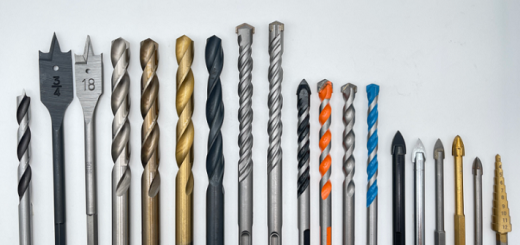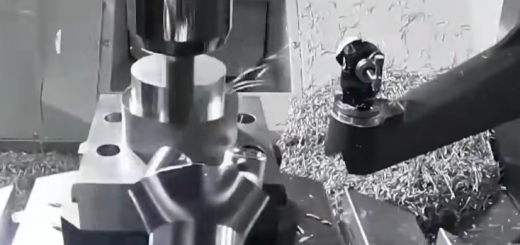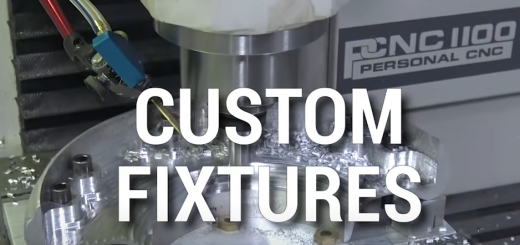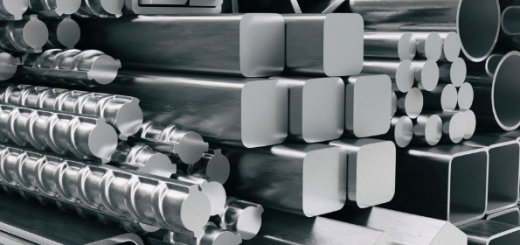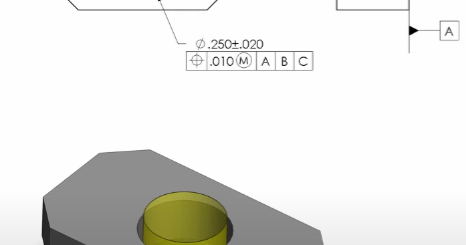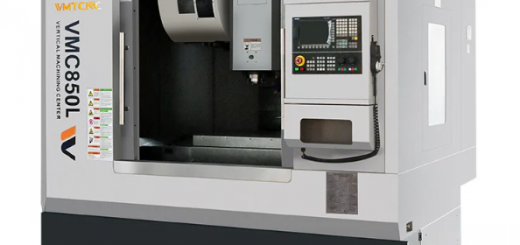Climb vs Conventional Cutting on CNC Router, What is the Difference?
When working with a CNC router, you may encounter two distinct cutting methods: climb cutting and conventional cutting. Understanding the difference between these two is essential for optimizing your CNC projects and achieving the best results. In this guide, we’ll cover what each method entails, as well as when and why to use one over the other.
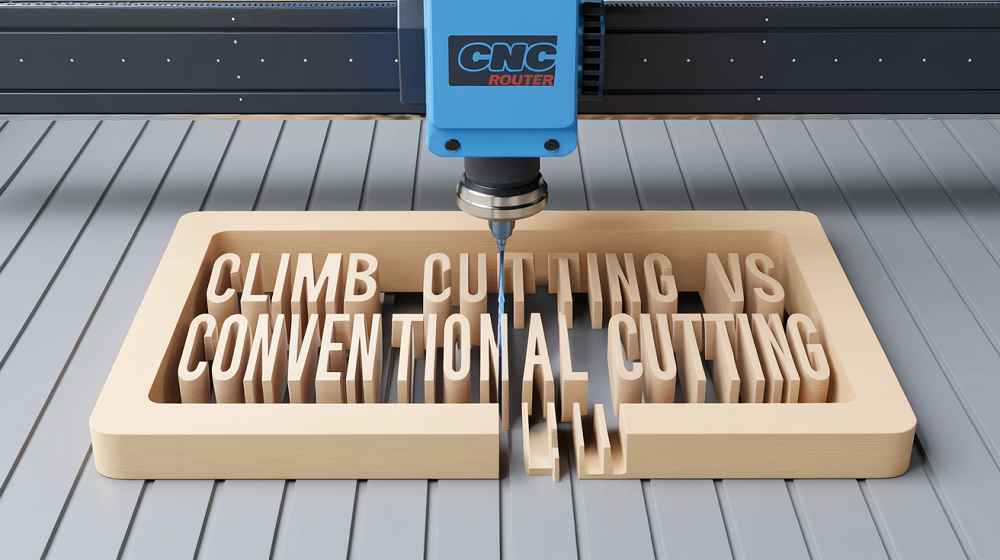
1. What is Climb Cutting?
Climb cutting refers to a method where the router bit moves in the same direction as the rotation of the bit. As the bit rotates, it “climbs” along the cutting path, moving with the material rather than against it. This method reduces the cutting force and provides a smoother finish because the cutting edge is engaging the material in a rolling motion.
Key Features of Climb Cutting:
- The router bit rotates and moves in the same direction.
- It produces a cleaner cut with less tear-out.
- Climb cutting tends to push the router away from the workpiece, requiring more control.
- The cutting forces can cause the bit to pull itself into the material, which may lead to inaccuracies if the router is not rigid or if too much force is applied.
Pros of Climb Cutting:
- Better Finish: Climb cutting tends to leave a cleaner edge, particularly in softer woods and materials prone to tearing.
- Reduced Heat: The cutting edge stays cooler due to reduced friction.
Cons of Climb Cutting:
- Requires Strong Control: Because the bit is pushing itself along the cut, it can pull the machine if not controlled properly.
- Potential for Deflection: The forces acting on the bit may cause it to deflect or bend slightly, especially if the feed rate is too high.
2. What is Conventional Cutting?
Conventional cutting is the opposite of climb cutting. In this method, the router bit moves against the direction of its rotation. The bit cuts into the material in a manner akin to pushing a shovel into the ground, removing material by plowing through it.
Key Features of Conventional Cutting:
- The bit moves in the opposite direction of the material feed.
- It creates more resistance, requiring more force to push the router through the material.
- Conventional cutting pulls the material towards the router, making it easier to control.
Pros of Conventional Cutting:
- Greater Control: Because the bit is pulling into the material, the operator has more control, and the machine resists being thrown off course.
- More Reliable for Roughing: This method is often used when removing large amounts of material as it allows for better control over the cutting forces.
Cons of Conventional Cutting:
- Lower Quality Finish: The cutting edge tends to “tear” the material more, especially with softer materials, leading to rougher edges.
- Increased Tool Wear: Since the bit is constantly digging into the material, it experiences more friction and heat buildup.
3. Climb vs Conventional Cutting: What is the Difference?
The key difference between climb cutting and conventional cutting lies in the direction the router bit moves relative to its rotation.
- Direction of Cut:
- In climb cutting, the bit moves in the same direction as its rotation.
- In conventional cutting, the bit moves against the rotation.
- Cutting Forces:
- Climb cutting creates a rolling motion, reducing the cutting force but increasing the risk of the bit pulling itself into the material.
- Conventional cutting creates more resistance, requiring more force to push through, but offering better control and less risk of the bit pulling into the workpiece.
- Surface Finish:
- Climb cutting typically produces a smoother finish because the bit slices the material cleanly.
- Conventional cutting can leave a rougher finish, especially in softer materials, but it’s more reliable for initial roughing cuts.
- Control and Accuracy:
- Climb cutting requires a more rigid machine and precise control due to the forces pushing the router away from the material.
- Conventional cutting offers better control and is often the preferred method for roughing cuts or when cutting materials that need more resistance to deflective forces.
- When to Use:
- Use climb cutting for finishing passes when you want a cleaner edge and can manage the forces acting on the router.
- Use conventional cutting for roughing passes or when working with harder materials where control is more important than the finish.
Practical Example
Let’s consider a simple project where you are cutting two concentric circles. In this case:
- Using conventional cutting on the outer circle means the bit rotates against the material as it moves counterclockwise.
- Using climb cutting on the inner circle means the bit rotates with the material, moving clockwise.
This difference in rotation ensures you achieve the smoothest, most controlled cuts based on the material and pass you are working on.
4. When to Use Climb Cutting or Conventional Cutting?
Before deciding between climb cutting or conventional cutting, it’s important to understand the strengths and limitations of each method. The type of material, the rigidity of your machine, and the desired finish all play a role in determining which cutting approach will yield the best results. Below, we break down when to use climb cutting versus conventional cutting, depending on your specific CNC project needs.
When To Use Climb Cutting:
- Finish cuts: Use climb cutting when you want a smoother edge.
- Soft materials: It works well with softwoods or materials prone to tear-out.
- Low-force operations: When the machine is rigid and the feed rate is controlled, climb cutting can work for both roughing and finishing.
When To Use Conventional Cutting:
- Roughing cuts: Start with conventional cutting when removing large amounts of material.
- Hardwoods: It’s better for harder materials where control is more critical.
- Control over deflection: If your machine has some flex or your bit is prone to deflection, conventional cutting will give you better accuracy.
The choice between climb cutting and conventional cutting boils down to the specific needs of your project. Climb cutting offers a cleaner finish but can be tricky to control, especially on less rigid machines. Conventional cutting provides more control and is better suited for roughing, but it may leave a rougher edge. By understanding the properties of both methods, you can optimize your cuts for efficiency, precision, and finish quality.
For more tips and tools related to CNC routing, visit IDC Woodcraft, and don’t forget to check out our CNC setup checklist and router bit app to ensure every project goes smoothly!

